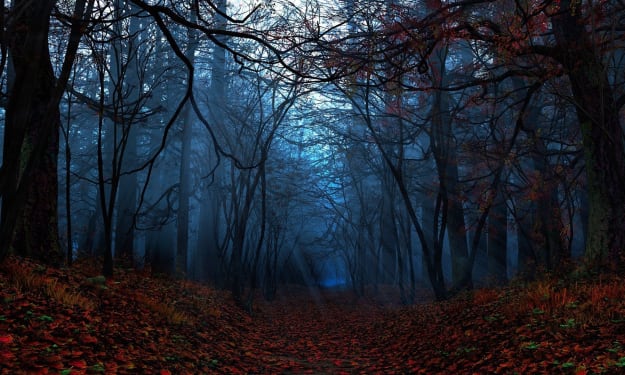
The Devil in the White City is a non-fiction book by Erik Larson that examines the events surrounding the Chicago World’s Fair of 1893, also known as the World’s Columbian Exposition. In this book summary, we’ll explore the book’s key ideas and examine why Chicago became a city of such fame.
The first key idea of the book focuses on the city of Chicago in the late nineteenth century. As the city grew, it became known for its high murder rates, vice, and violence. Death was commonplace along the city’s many railroad crossings, with an average of two people crushed under train wheels every day. Fire was another common killer, with wooden shanty homes often going up in flames and killing dozens daily. The city’s water supply was also deadly, as sewage that spilled into the Chicago River was teeming with unhealthy bacteria. Cholera, typhus, and other potentially fatal diseases were just a fact of life. Murder rates in Chicago were some of the highest in North America. The city’s police didn’t have the manpower or even the training to manage this violent city. In the first half of 1892, some 800 gruesome deaths were counted in Chicago – that’s about four deaths every day.
Despite all the chaos, Chicago was also witness to serious social change. Women were entering the workforce in droves, allowing many young, single women to build new lives for themselves in Chicago. Chicago’s industry was booming, with the city’s meatpacking district the largest in the nation. Demand for housing was high, and the growth in real estate construction saw modern skyscrapers rapidly shaping the Chicago skyline.
The second key idea of the book focuses on the World’s Columbian Exposition, which was held in Chicago in 1893. At the turn of the century, the United States was eager to establish itself as a world leader in culture, yet it clearly lagged many of its European rivals. France had hosted the Exposition Universelle in 1889, a colossal, glamorous world’s fair. While not common today, a world’s fair is a gigantic public exhibition that takes the form of a mini-city. Countries of the world are invited to take part, hosting exhibits and putting modern innovations on display. Gustave Eiffel, for example, erected his now-famous tower of iron and steel as the centerpiece of the Exposition Universelle. America had a section at the fair, but it wasn’t too impressive, and many felt the country’s jumble of booths an embarrassment. Officials afterward were determined to repair the country’s reputation by hosting a world's fair that would outdo France.
Chicago, Washington, and New York were the favorites to host the fair, and Chicago prevailed, despite its corrupt, violent nature. The World’s Columbian Exposition was to be a celebration of the 400th anniversary of Columbus discovering America. The fair thrust Chicago into the limelight and attracted people from all over the world. Its aftereffects lingered for generations, from its skyline to demographics and even its language. Famous brands like Aunt Jemima, Cream of Wheat, and Pabst Blue Ribbon beer all launched at the fair and still exist today.
The third key idea of the book focuses on Daniel Burnham, the architect who led the construction of the World’s Columbian Exposition. Burnham was a visionary who believed that architecture and urban planning could be used to create a better society. He was tasked with building an entire city within the city in just a few short years. The book follows Burnham’s journey as he worked tirelessly to make the fair a success. He faced numerous obstacles, including a lack of funding and a tight deadline.
The Devil in the White City Key Idea #4: The World’s Columbian Exposition was a great success, but it also brought the city’s dark side to the fore.
Despite all the difficulties and setbacks, the World’s Columbian Exposition opened on May 1, 1893, and was a resounding success. Millions of people visited the fair, and it had a profound impact on American culture and society.
The fair was a showcase of technological innovation, with exhibits such as the first Ferris wheel, which offered breathtaking views of the city, and the moving walkway, a precursor to the modern escalator.
But alongside the grandeur and spectacle of the fair, the city’s darker side was also on display. In particular, one man stands out as the embodiment of Chicago’s dark underbelly – Dr. H. H. Holmes, America’s first-known serial killer.
Holmes was a charming and charismatic man who used his good looks and charm to manipulate people, especially young women. He was also a con artist, and his Chicago hotel was a trap for unsuspecting guests.
Holmes had designed his hotel, which he called the “World’s Fair Hotel,” with a maze of secret passageways, hidden staircases, and soundproof rooms. He would lure young women into these rooms and murder them, often dissecting their bodies and selling their organs to medical schools.
Holmes is thought to have killed at least 27 people, although some estimates put the number closer to 200. He was eventually caught and hanged for his crimes, but his story remains a chilling reminder of the darker side of Chicago’s history.
The Devil in the White City Key Idea #5: The legacy of the World’s Columbian Exposition lives on in Chicago and American culture.
Despite the dark shadow cast by Holmes and other aspects of Chicago’s history, the legacy of the World’s Columbian Exposition lives on in the city and in American culture more broadly.
The fair had a profound impact on architecture and urban planning. Daniel Burnham’s “City Beautiful” movement, which aimed to create beautiful, functional cities, was influenced by the fair, and many of the buildings and structures created for the exposition are still standing today.
The fair also had an impact on American literature and culture. The “Midway Plaisance,” a row of amusement park rides and other attractions at the fair, inspired L. Frank Baum’s “Wizard of Oz” series, while other writers such as Theodore Dreiser and Frank Norris were also influenced by the fair.
In addition, many of the brands that were launched at the fair are still household names today, including Juicy Fruit gum, Cracker Jack popcorn, and Quaker Oats.
Final Summary
In conclusion, Erik Larson’s “The Devil in the White City” is a gripping account of Chicago’s history at the turn of the century, with a particular focus on the World’s Columbian Exposition of 1893. The fair was a showcase of American innovation and culture, but it also exposed the dark underbelly of Chicago, with its high crime rates, corruption, and poverty.
The book is a fascinating exploration of the dichotomy between light and dark, good and evil, and the enduring legacy of the fair on Chicago and American culture. Whether you’re interested in history, architecture, or true crime, “The Devil in the White City” is a must-read that will leave you with a deeper understanding of one of America’s most iconic cities.
To win exciting prizes click here
To get cool gadgets from amazon click here buddy
1. neck pillow
About the Creator
Vairamani S
I'm an Engineer with an interest in writing about numerous topics. I aim to provide informative and entertaining content that educates and shares my insights with others. Thanks for reading!
Reader insights
Outstanding
Excellent work. Looking forward to reading more!
Top insight
Expert insights and opinions
Arguments were carefully researched and presented






Comments (1)
This piece was really well written! Definitely had me intrigued about the book.